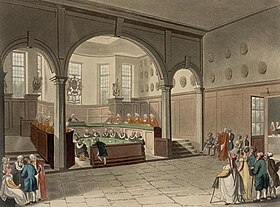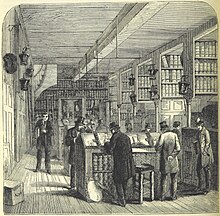
A barrister is a type of lawyer in common law jurisdictions. Barristers mostly specialize in courtroom advocacy and litigation. Their tasks include arguing cases in courts and tribunals, drafting legal pleadings, researching the law and giving legal opinions.
A solicitor is a legal practitioner who traditionally deals with most of the legal matters in some jurisdictions. A person must have legally defined qualifications, which vary from one jurisdiction to another, to be described as a solicitor and enabled to practise there as such. For example, in England and Wales a solicitor is admitted to practise under the provisions of the Solicitors Act 1974. With some exceptions, practising solicitors must possess a practising certificate. There are many more solicitors than barristers in England; they undertake the general aspects of giving legal advice and conducting legal proceedings.
A law society is an association of lawyers with a regulatory role that includes the right to supervise the training, qualifications, and conduct of lawyers. Where there is a distinction between barristers and solicitors, solicitors are regulated by the law societies and barristers by a separate bar council.
The call to the bar is a legal term of art in most common law jurisdictions where persons must be qualified to be allowed to argue in court on behalf of another party and are then said to have been "called to the bar" or to have received "call to the bar". "The bar" is now used as a collective noun for barristers, but literally referred to the wooden barrier in old courtrooms, which separated the often crowded public area at the rear from the space near the judges reserved for those having business with the court. Barristers would sit or stand immediately behind it, facing the judge, and could use it as a table for their briefs.

The Inns of Court in London are the professional associations for barristers in England and Wales. There are four Inns of Court: Gray's Inn, Lincoln's Inn, Inner Temple and Middle Temple.

A consistory court is a type of ecclesiastical court, especially within the Church of England where they were originally established pursuant to a charter of King William the Conqueror, and still exist today, although since about the middle of the 19th century consistory courts have lost much of their subject-matter jurisdiction. Each diocese in the Church of England has a consistory court.
Proctor is a person who takes charge of, or acts for, another.

The Arches Court or Court of Arches, presided over by the Dean of Arches, is an ecclesiastical court of the Church of England covering the Province of Canterbury. Its equivalent in the Province of York is the Chancery Court.
Legum Doctor (LL.D.) or, in English, Doctor of Laws, is a doctorate-level academic degree in law or an honorary degree, depending on the jurisdiction. The double “L” in the abbreviation refers to the early practice in the University of Cambridge to teach both canon law and civil law, with the double “L” itself indicating the plural, although Cambridge now gives the degree the name Doctor of Law in English. This contrasts with the practice of the University of Oxford, where the degree that survived from the Middle Ages is the DCL or Doctor of Civil Law (only).

Sir Travers Twiss QC FRS was an English jurist. He had a distinguished academic and legal career culminating in his appointment as Queen's Advocate-General. Twiss was particularly noted for his contribution to the theory of international law. He was widely consulted, and was asked to draw up the constitution of the Congo Free State. A prolific author, Twiss wrote many influential textbooks on legal matters.

Sir Robert Joseph Phillimore, 1st Baronet, was an English judge and politician. He was the last Judge of the High Court of Admiralty from 1867 to 1875 bringing an end to an office that had lasted nearly 400 years.

The Inns of Chancery or Hospida Cancellarie were a group of buildings and legal institutions in London initially attached to the Inns of Court and used as offices for the clerks of chancery, from which they drew their name. Existing from at least 1344, the Inns gradually changed their purpose, and became both the offices and accommodation for solicitors and a place of initial training for barristers.

Jocelyn Edward Salis Simon, Baron Simon of Glaisdale, was a Law Lord in the United Kingdom, having been, by turns, a barrister, a commissioned officer in the British Army, a barrister again, a Conservative Party politician, a government minister, and a judge.

The Matrimonial Causes Act 1857 was an Act of the Parliament of the United Kingdom. The Act reformed the law on divorce, moving litigation from the jurisdiction of the ecclesiastical courts to the civil courts, establishing a model of marriage based on contract rather than sacrament and widening the availability of divorce beyond those who could afford to bring proceedings for annulment or to promote a private Bill. It was one of the Matrimonial Causes Acts 1857 to 1878.

The High Court of Admiralty Act 1859 was an Act of Parliament passed by the Parliament of the United Kingdom. The Act was an important step in moving the ancient Admiralty Court of England and Wales towards its modern constitution. It was also an important step in the abolition of Doctors' Commons.

The Courts and Legal Services Act 1990 was an Act of the Parliament of the United Kingdom that reformed the legal profession and courts of England and Wales. The Act was the culmination of a series of reports and reforms that started with the Benson Commission in the 1970s, and significantly changed the way that the legal profession and court system worked.

Stone Buildings, Lincoln's Inn were constructed from 1774 to 1780. The architect was Sir Robert Taylor. Stone Buildings is a Grade I listed building. Stone Buildings appear in Anthony Trollope's novel The Prime Minister.
The Legal profession in England and Wales is divided into two distinct branches under the legal system, those of solicitors and barristers. Other legal professions in England and Wales include acting as a judge, as the Attorney-General, as the Solicitor-General, or as the Director of Public Prosecutions.
Henry Charles Coote (1815–1885) was an English lawyer and antiquarian.
The Society of Gentleman Practisers in the Courts of Law and Equity was an 18th-century professional society for attorneys and solicitors in England and Wales. It was founded in 1739 or 1740 to improve the social standing of the professions and to implement professional standards. It was the first law society to be established in the United Kingdom, though its relationship to the modern-day Law Society of England and Wales is not certain.













